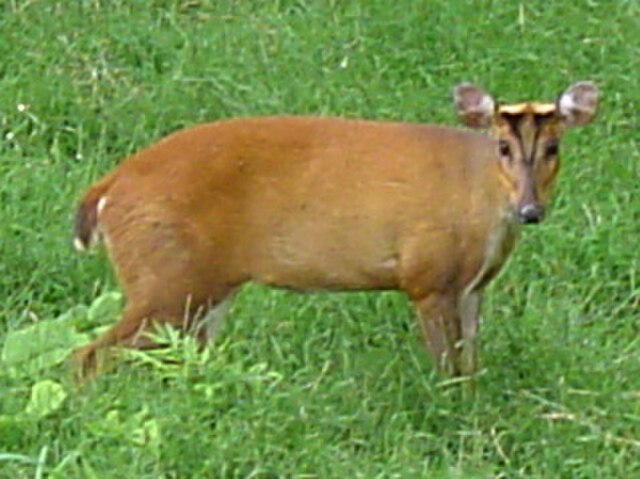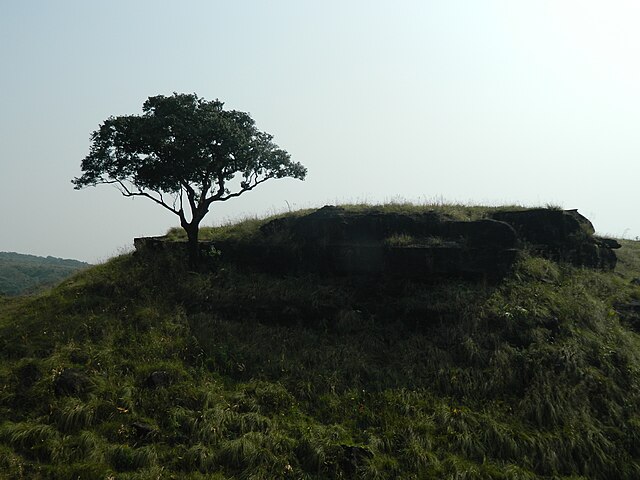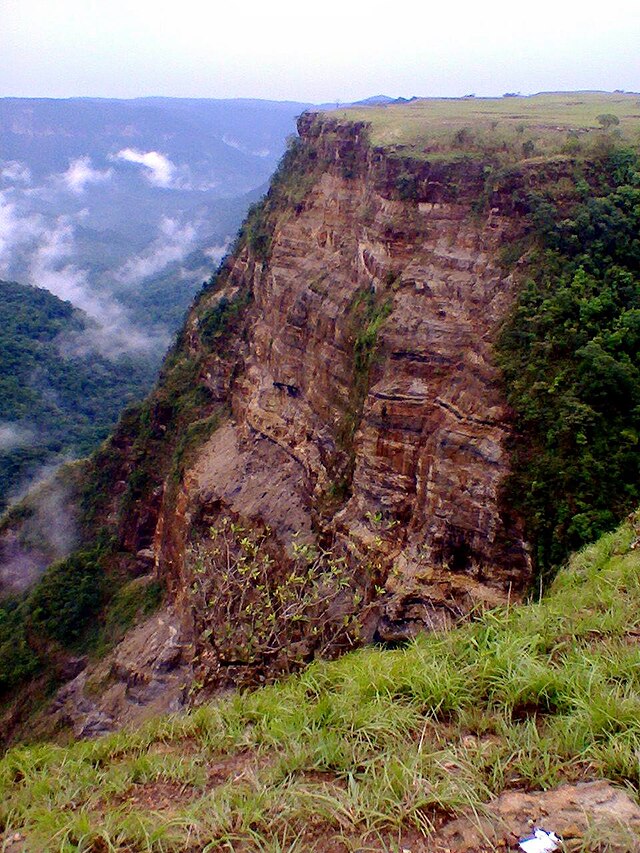Have you ever wondered what it feels like to step into a land that time forgot? Welcome to Balpakram National Park, where nature has painted a masterpiece that few have had the privilege to witness. Tucked away in the heart of Meghalaya, this incredible sanctuary isn’t just another national park – it’s a window into India’s most pristine wilderness.
What Makes Balpakram National Park Special?
Imagine a place where clouds kiss the earth and ancient forests whisper secrets of centuries past. That’s Balpakram for you! This remarkable national park stands as one of Northeast India’s most spectacular natural treasures, offering visitors an experience that’s both humbling and exhilarating.
A Brief Introduction to Northeast India’s Gem
Established in 1987, Balpakram National Park sprawls across 220 square kilometers of breathtaking landscape in the South Garo Hills district of Meghalaya. The name “Balpakram” literally translates to “land of perpetual winds” in the local Garo language, and trust me, once you experience those mystical breezes flowing across the plateau, you’ll understand why.
What sets this park apart isn’t just its stunning beauty – it’s the incredible biodiversity that calls this place home. From rare orchids that bloom in hidden corners to elusive wildlife that roams freely through ancient forests, Balpakram is nature’s own private collection of wonders.
Location and How to Reach Balpakram National Park
Getting to Balpakram might feel like embarking on a treasure hunt, but isn’t that part of the adventure? Located approximately 167 kilometers from Shillong and about 2,800 feet above sea level, this park offers the perfect escape from the chaos of modern life.
Getting There: Your Journey to the Wilderness
The journey to Balpakram is as memorable as the destination itself. Most visitors start their adventure from Guwahati, which serves as the gateway to Northeast India. From there, you’ll need to make your way to Tura, the nearest major town to the park.
The road to Balpakram winds through some of the most scenic landscapes you’ll ever encounter. Rolling hills, dense forests, and traditional Garo villages dot the route, offering glimpses into a way of life that remains largely untouched by urbanization.
Best Routes and Transportation Options
Your best bet is to fly into Guwahati and then take a road trip to Tura. The drive takes about 4-5 hours, but every minute is worth it. From Tura, it’s another 90 kilometers to reach the park entrance. While public transportation is available, I’d recommend hiring a private vehicle for the flexibility to stop and soak in the incredible views along the way.
The Rich Biodiversity of Balpakram
Here’s where Balpakram truly shines – its incredible biodiversity that rivals some of the world’s most famous national parks. This place is like nature’s own laboratory, where evolution has been experimenting for millions of years.
Flora: A Botanical Wonderland
Step into Balpakram, and you’re stepping into one of India’s most diverse ecosystems. The park is home to over 438 species of flowering plants, including some of the rarest orchids you’ll find anywhere in the world. The landscape transitions from grasslands to dense forests, creating microhabitats that support an amazing variety of plant life.
The subtropical forests here are dominated by species like Castanopsis, Quercus, and Schima, while the grasslands showcase a completely different botanical palette. During the monsoon season, the entire park transforms into a green carpet dotted with wildflowers that create a natural kaleidoscope of colors.
Fauna: Wildlife That Will Leave You Amazed
But it’s the animals that truly make Balpakram special. This park is home to some of India’s most elusive wildlife, including the red panda – yes, you read that right! These adorable creatures call the forests of Balpakram home, though spotting one requires patience and a good deal of luck.
The park also shelters elephants, tigers, leopards, and the endangered hoolock gibbons whose haunting calls echo through the forest at dawn. Wild buffalo roam the grasslands, while deer species like barking deer and sambar find refuge in the dense undergrowth.
Endangered Species Conservation
What makes Balpakram even more significant is its role as a sanctuary for endangered species. The park serves as a crucial habitat for several threatened animals, making conservation efforts here vital for their survival. The red panda population, though small, represents hope for the species’ future in this region.
Geological Wonders and Landscape Features
Balpakram isn’t just about plants and animals – it’s also a geological wonderland that tells the story of our planet’s ancient past. The park sits on a plateau that was formed millions of years ago, creating a unique landscape that’s both beautiful and scientifically fascinating.
The Mysterious Plateau Formation
The Balpakram plateau is like a natural fortress, rising dramatically from the surrounding plains. This elevated landscape creates its own weather patterns and supports ecosystems that are distinctly different from the surrounding areas. The plateau’s flat top and steep sides create a microclimate that’s perfect for the unique flora and fauna that call this place home.
Caves and Rock Formations
Scattered throughout the park are numerous caves and rock formations that add an element of mystery to your visit. These geological features have been carved by millions of years of wind and water erosion, creating natural sculptures that would make any artist jealous. Some locals believe these caves hold spiritual significance, adding a cultural dimension to their natural beauty.
Best Time to Visit Balpakram National Park

Timing your visit to Balpakram can make the difference between a good trip and an unforgettable adventure. Like most destinations in Northeast India, the park’s character changes dramatically with the seasons.
Weather Patterns Throughout the Year
The best time to visit Balpakram is between October and April when the weather is pleasant and the skies are generally clear. During these months, temperatures range from 15°C to 25°C, making it perfect for outdoor activities and wildlife spotting.
The monsoon season (May to September) brings heavy rainfall that can make travel challenging, but it also transforms the park into a lush green paradise. If you don’t mind getting a bit wet and can handle muddy trails, the monsoon season offers its own unique charm.
Seasonal Wildlife Activity
Different seasons offer different wildlife experiences. Winter months are excellent for bird watching as migratory species visit the park. Spring brings out the flowers, while the post-monsoon period is ideal for spotting larger mammals as they become more active after the rains.
Activities and Attractions in Balpakram
Balpakram isn’t just a place to admire from a distance – it’s an adventure playground for nature enthusiasts. Whether you’re an adrenaline junkie or someone who prefers peaceful contemplation, this park has something for everyone.
Trekking and Nature Walks
The park offers several trekking routes that cater to different fitness levels. The most popular trail takes you across the plateau, offering stunning panoramic views of the surrounding landscape. These walks aren’t just about exercise – they’re journeys of discovery where every step might reveal a new species of plant or an unexpected wildlife encounter.
The trails wind through different ecosystems, from open grasslands where you can spot grazing animals to dense forests where the canopy blocks out most of the sunlight. Each environment offers its own unique challenges and rewards.
Wildlife Photography Opportunities
For photography enthusiasts, Balpakram is nothing short of paradise. The park’s diverse landscapes and rich wildlife provide endless opportunities for capturing stunning images. Whether you’re interested in macro photography of rare orchids or hoping to capture the elusive red panda in its natural habitat, this park delivers.
The golden hour lighting on the plateau creates magical conditions for landscape photography, while the dense forests offer opportunities for more intimate wildlife portraits. Just remember to maintain a respectful distance from all animals and follow the park’s photography guidelines.
Bird Watching Paradise
With over 150 species of birds recorded in the park, Balpakram is a bird watcher’s dream come true. From colorful hornbills to tiny sunbirds, the park’s avian diversity is truly remarkable. The best bird watching happens in the early morning when the forest comes alive with calls and activity.
Accommodation and Facilities
Planning your stay around Balpakram requires some preparation, as accommodation options within the park are limited. However, this limitation actually adds to the authentic wilderness experience.
Where to Stay Near the Park
The park offers basic forest rest houses that provide a truly immersive experience. These accommodations are simple but clean, offering the unique opportunity to fall asleep to the sounds of the forest and wake up to bird calls. For those seeking more comfort, Tura offers several hotels and guesthouses about 90 kilometers away.
Many visitors choose to camp within designated areas of the park, which provides the most authentic wilderness experience. Imagine sitting around a campfire under a canopy of stars, sharing stories while listening to the mysterious sounds of the night forest.
Conservation Efforts and Challenges
Like many protected areas in India, Balpakram faces its share of conservation challenges. Understanding these issues helps visitors appreciate the delicate balance required to preserve this natural treasure.
Protecting Meghalaya’s Natural Heritage
The park authorities work tirelessly to protect Balpakram’s unique ecosystem from various threats including habitat encroachment, poaching, and climate change. Conservation efforts focus on maintaining the delicate balance between human needs and wildlife protection.
Community involvement plays a crucial role in these conservation efforts. Local Garo communities have traditionally been the guardians of these forests, and their traditional knowledge continues to inform modern conservation strategies.
Local Culture and Community Involvement
Balpakram isn’t just about nature – it’s also about the people who have called this region home for centuries. The local Garo tribes have a deep spiritual connection to these forests that goes back generations.
The Garo Tribes and Their Connection to Nature
The Garo people view Balpakram as a sacred place where the spirits of their ancestors reside. This spiritual connection has helped preserve the forests for generations, as traditional beliefs emphasize living in harmony with nature rather than exploiting it.
Visiting Balpakram offers opportunities to learn about Garo culture, from their traditional farming methods to their rich folklore that explains the natural phenomena of the region. This cultural dimension adds depth to the natural experience, making your visit more meaningful.
Tips for Visiting Balpakram National Park

Planning a successful trip to Balpakram requires some preparation. Here are some essential tips to help you make the most of your adventure.
Essential Preparations and What to Pack
First and foremost, obtain the necessary permits well in advance. The park authorities require advance permission for entry, especially for overnight stays. Pack appropriate clothing for changing weather conditions, including rain gear if you’re visiting during monsoon season.
Essential items include sturdy hiking boots, insect repellent, a first-aid kit, and plenty of water. Don’t forget your camera and binoculars for wildlife spotting. If you’re planning to camp, ensure you have proper camping gear or check if the forest department provides basic equipment.
Most importantly, pack patience and an open mind. Balpakram reveals its secrets to those who take time to observe and appreciate the subtle beauty of the wilderness.
Conclusion
Balpakram National Park stands as one of India’s most remarkable wilderness areas, offering visitors a chance to experience nature in its purest form. From its incredible biodiversity to its stunning landscapes, from its rich cultural heritage to its important conservation role, this park represents everything that makes Northeast India special.
Your journey to Balpakram won’t just be a vacation – it’ll be a transformation. In a world where true wilderness is becoming increasingly rare, places like Balpakram remind us of what we stand to lose if we don’t protect our natural heritage. Whether you’re seeking adventure, peace, or simply a deeper connection with nature, Balpakram National Park delivers an experience that will stay with you long after you’ve returned home.
So, are you ready to discover Meghalaya’s hidden paradise? Pack your sense of adventure and prepare for a journey that will redefine your relationship with the natural world.
Frequently Asked Questions
Q1: Do I need special permits to visit Balpakram National Park?
Yes, you need permits from the Meghalaya Forest Department to enter Balpakram National Park. It’s recommended to apply for permits at least a week in advance through the nearest forest office or online through the official Meghalaya tourism website.
Q2: What is the best time of year to spot wildlife in Balpakram?
The best time for wildlife spotting is during the post-monsoon period (October to December) when animals are more active and vegetation is lush but not overgrown. Early morning and late afternoon hours offer the highest chances of wildlife encounters.
Q3: Can I camp inside Balpakram National Park?
Yes, camping is allowed in designated areas within the park with proper permits. The forest department provides basic camping facilities, but you can also bring your own equipment. Advance booking is essential, especially during peak season.
Q4: How difficult are the trekking trails in Balpakram?
The trekking trails vary from easy to moderate difficulty levels. The main plateau trail is relatively easy and suitable for beginners, while some forest trails require more stamina and experience. Most trails are well-marked, but hiring a local guide is recommended.
Q5: Are there any medical facilities available near the park?
Basic medical facilities are available in Tura, about 90 kilometers from the park. It’s strongly recommended to carry a comprehensive first-aid kit and any personal medications. For serious medical emergencies, the nearest major hospital is in Shillong.

